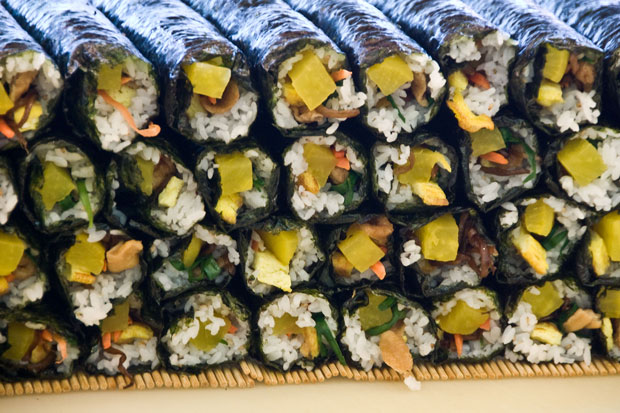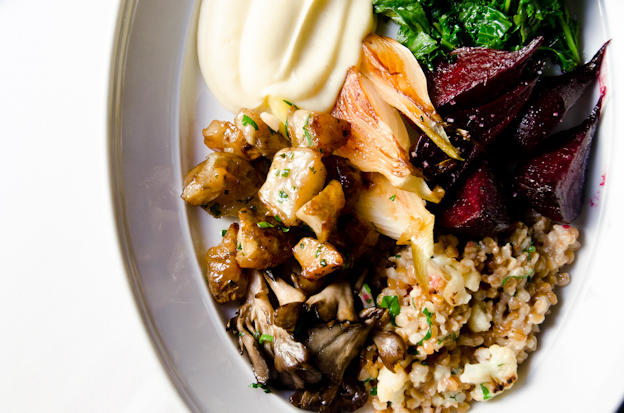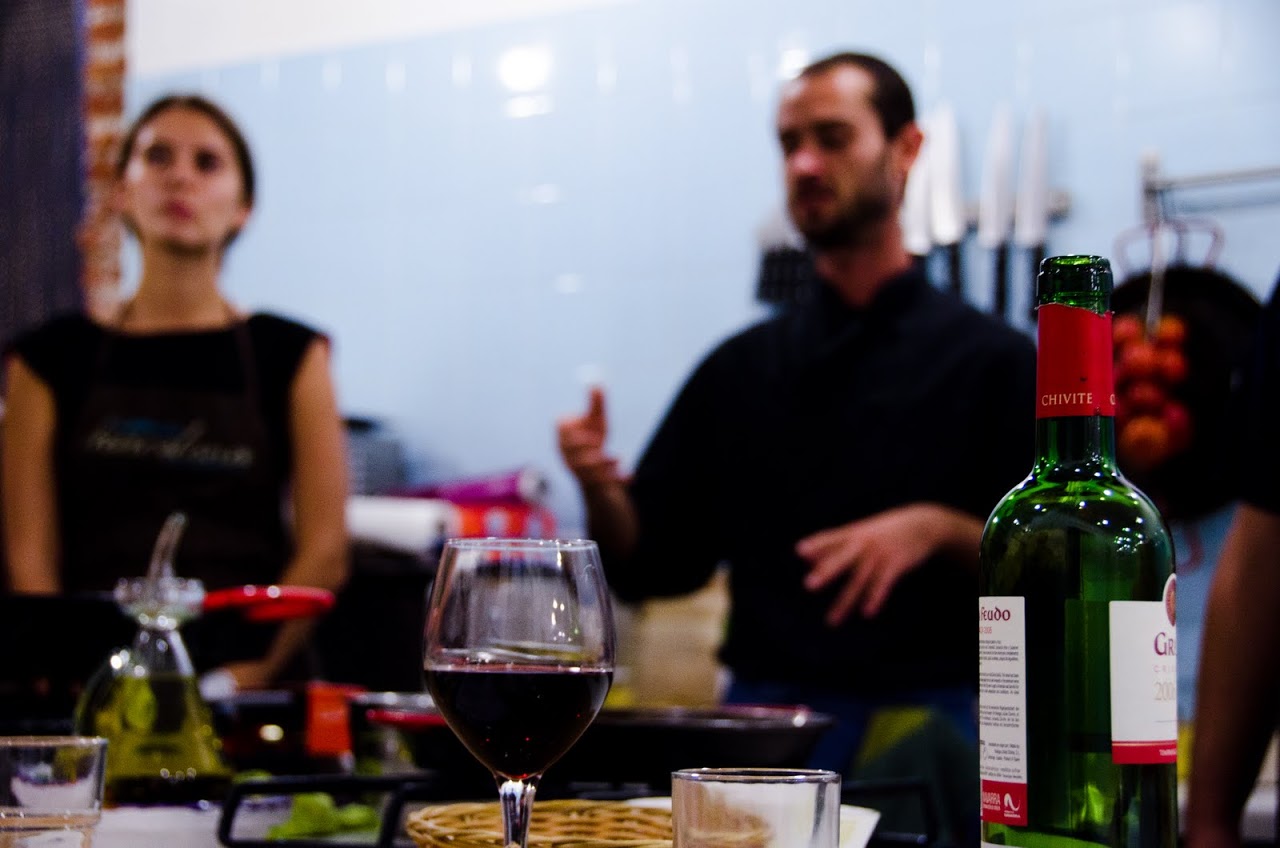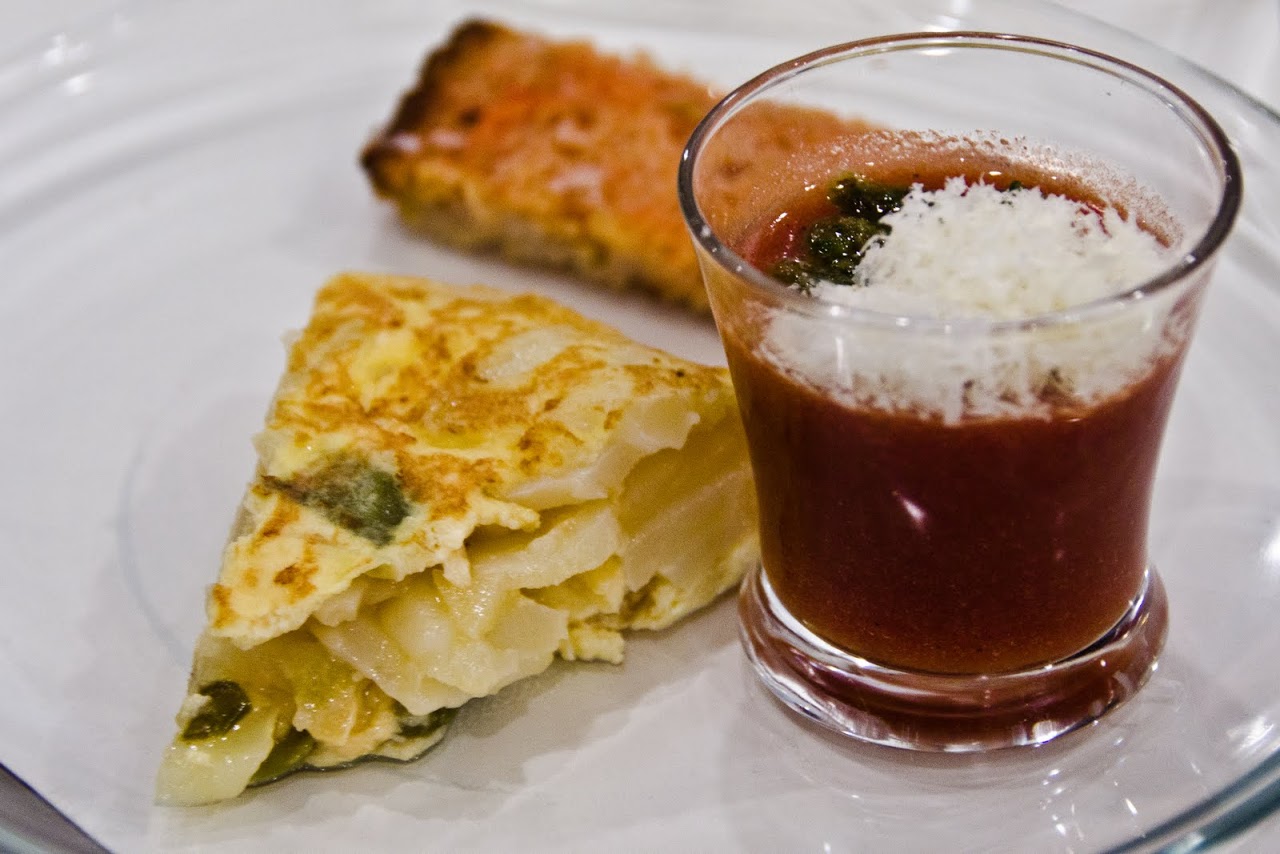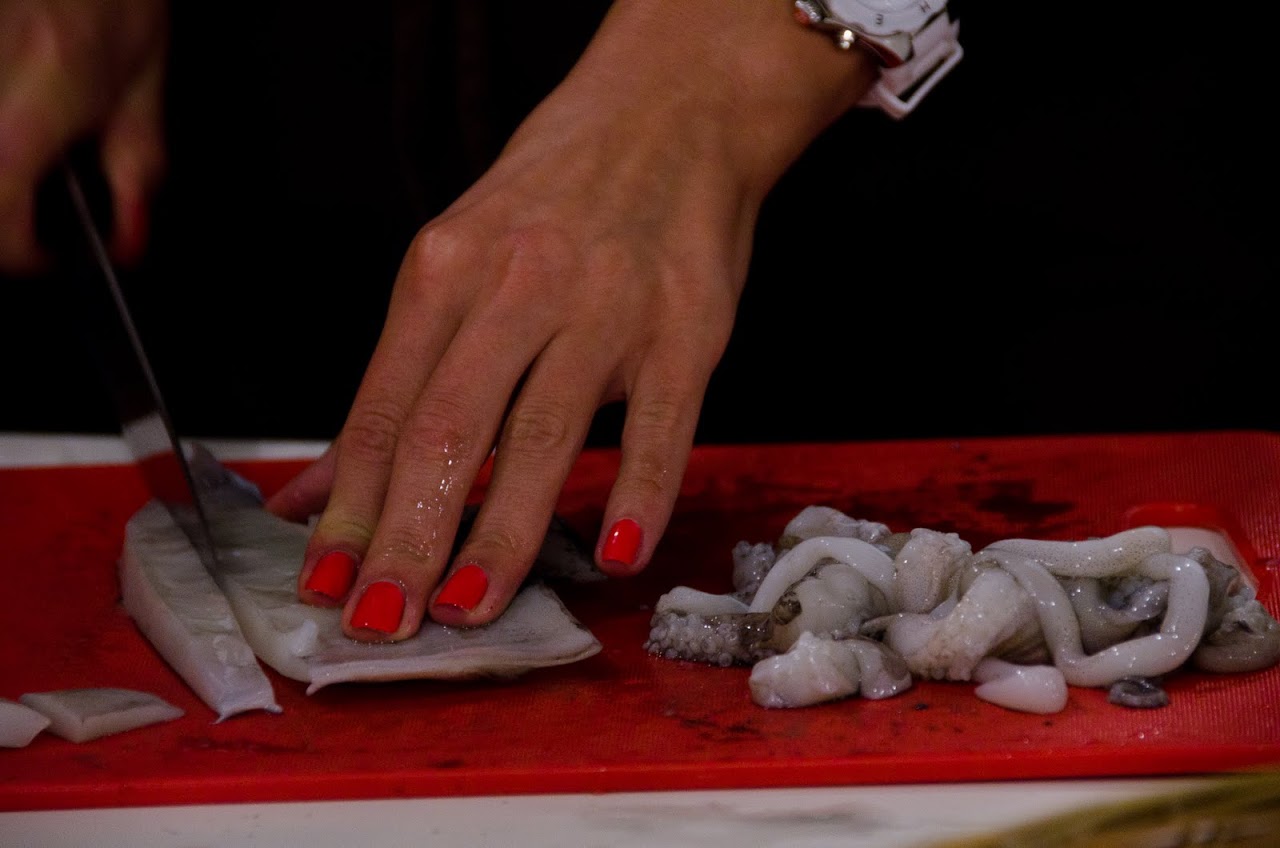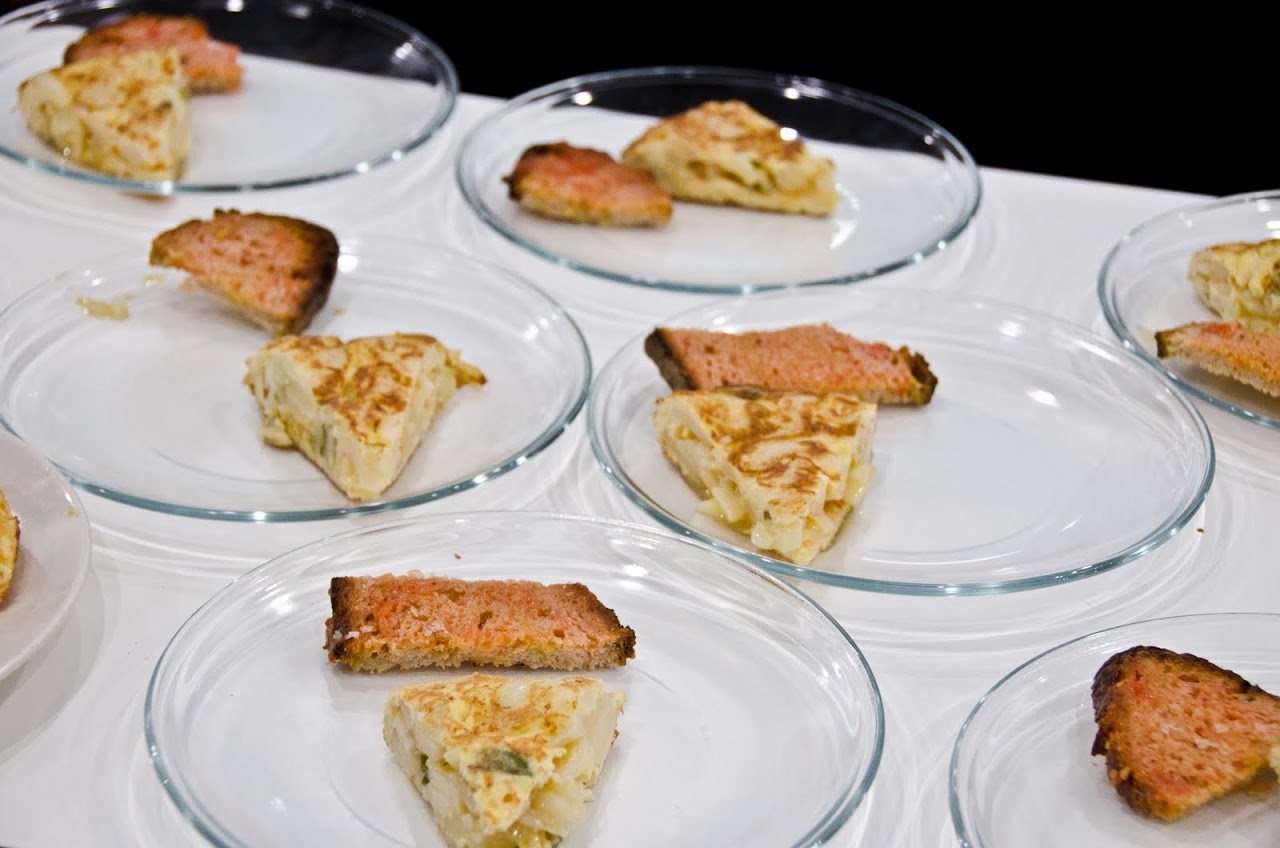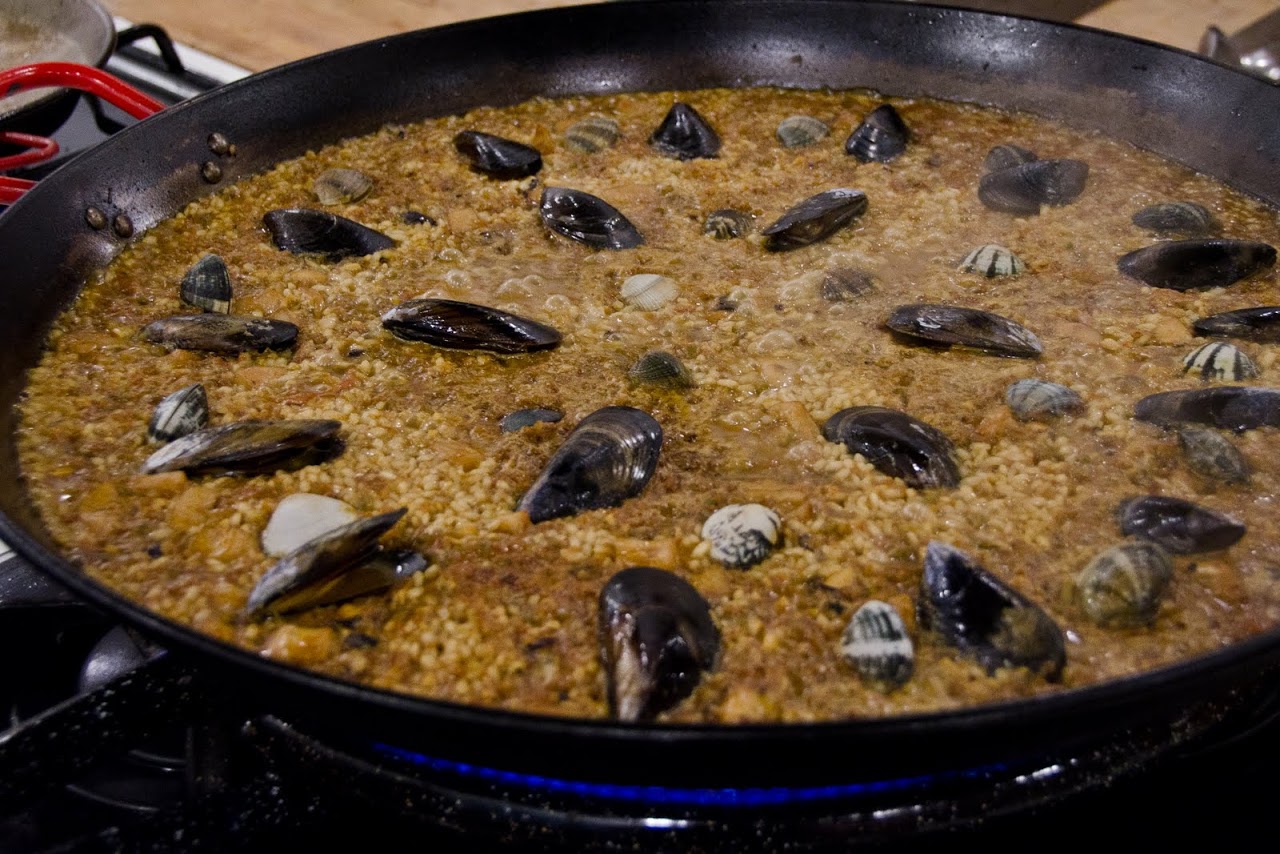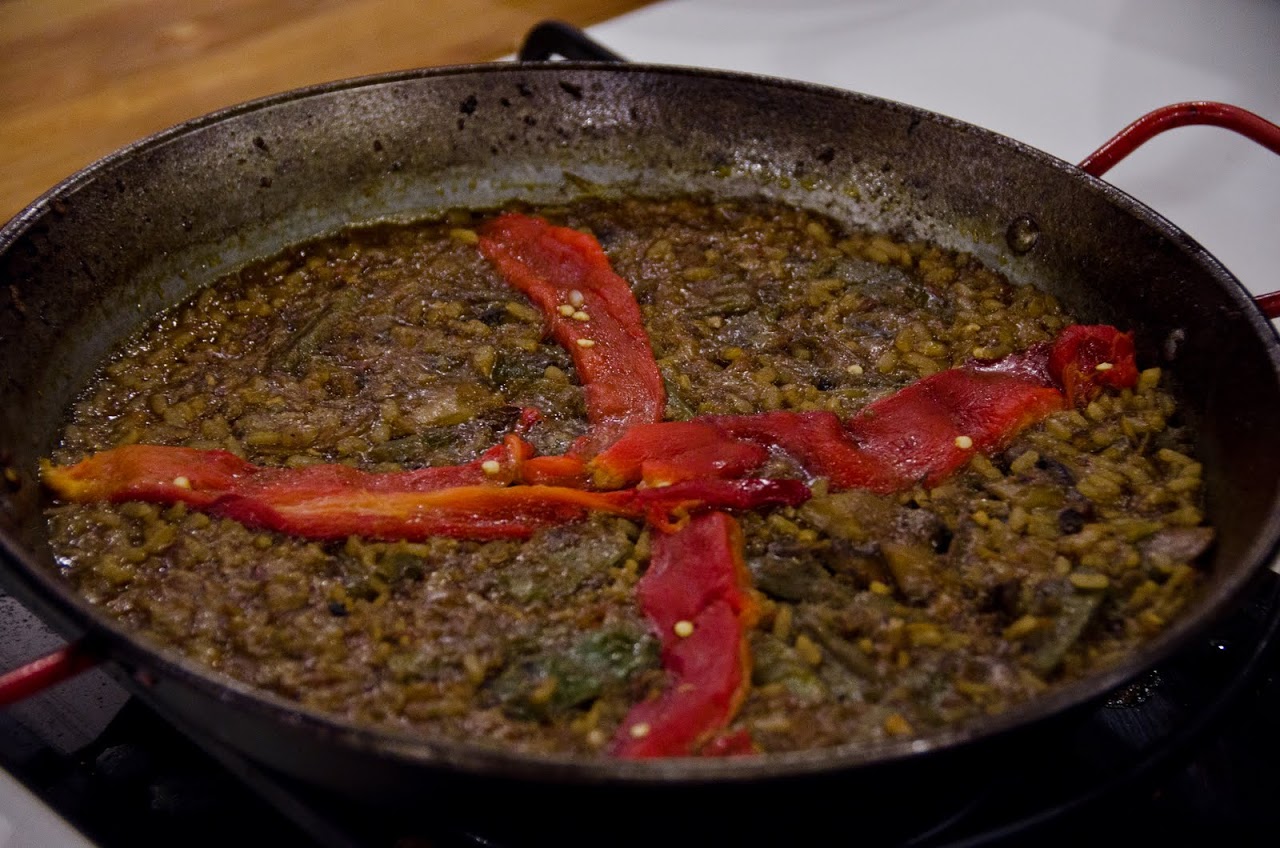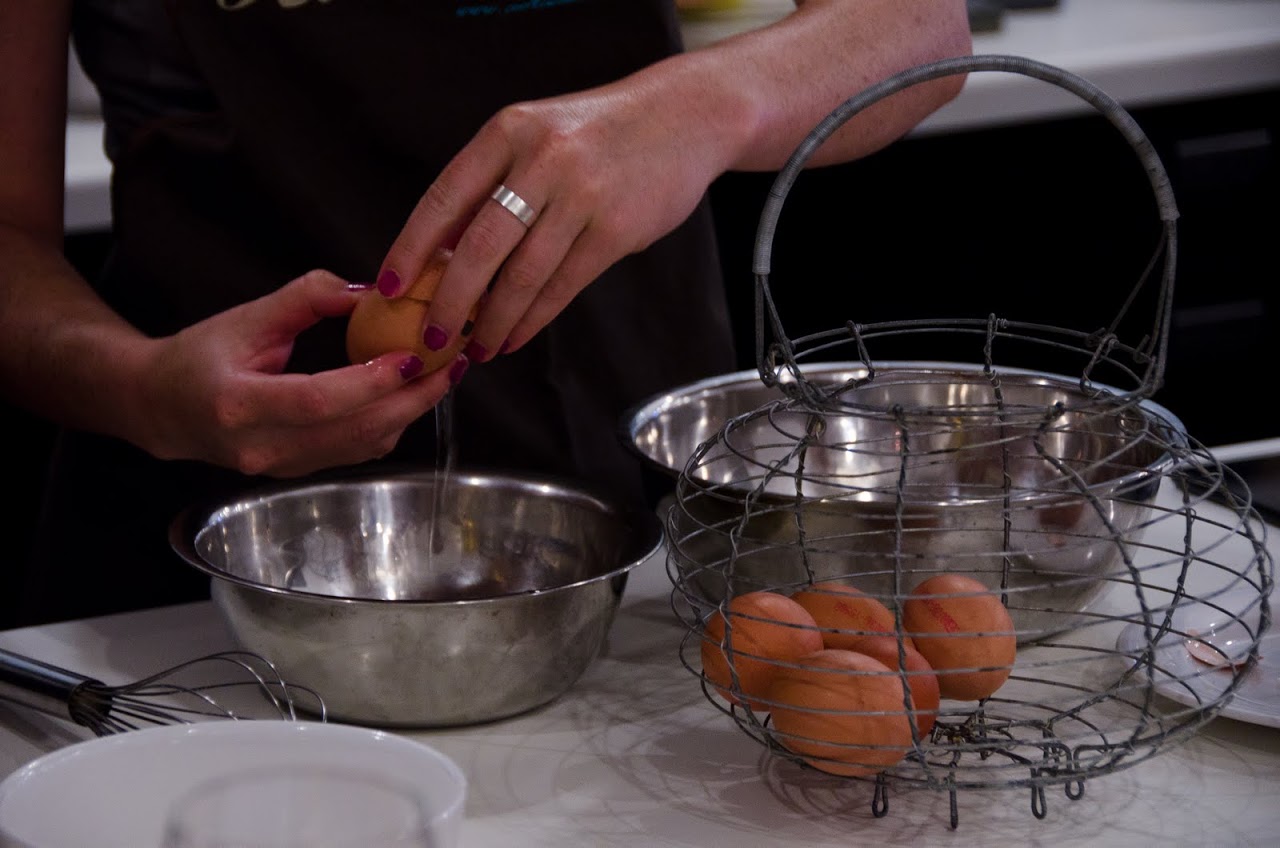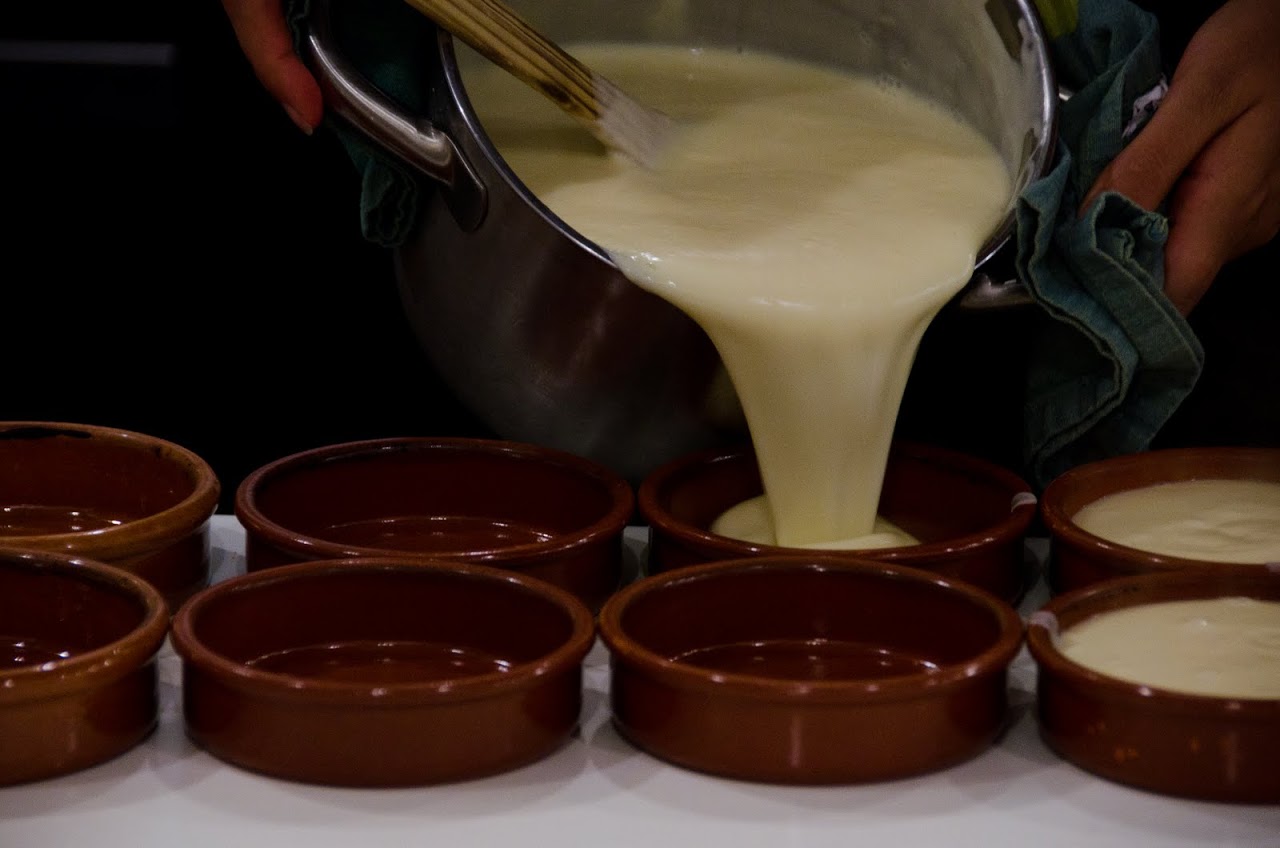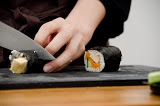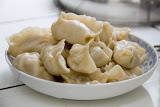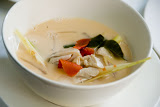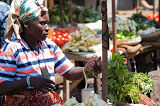Cook and Taste cooking class
I always want to get in the kitchen after eating good food. I want to know how such-and-such dish was made, how to replicate it myself with less fat and calories, or how to convert a meaty dish into a veggie-friendly one. So, when I saw the high ratings for Cook & Taste cooking class and market tou r on Tripadvisor, I booked a class immediately. After our instructor Ignacio Caminero took us through the Mercat de Boqueria (post coming soon), he brought us back to the Cook & Taste studio kitchen.
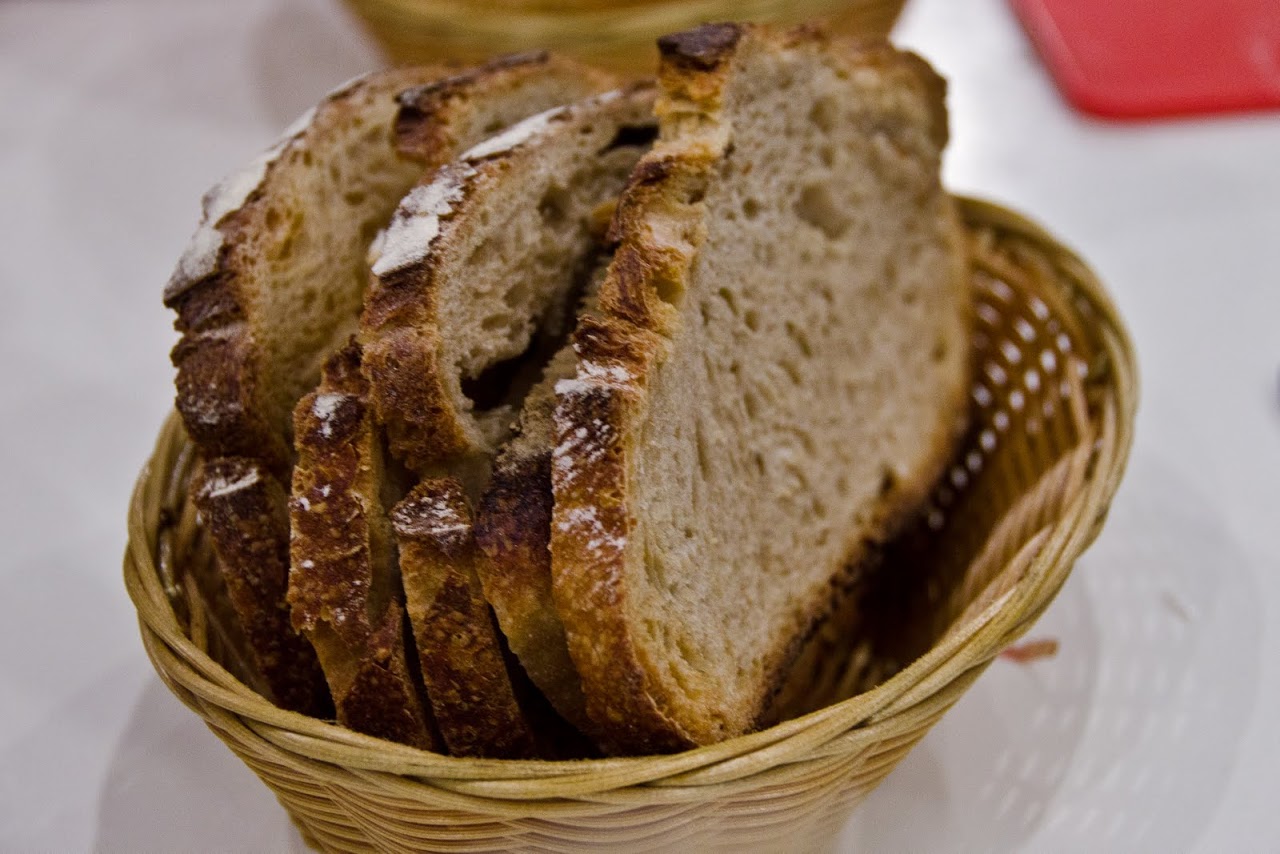
|
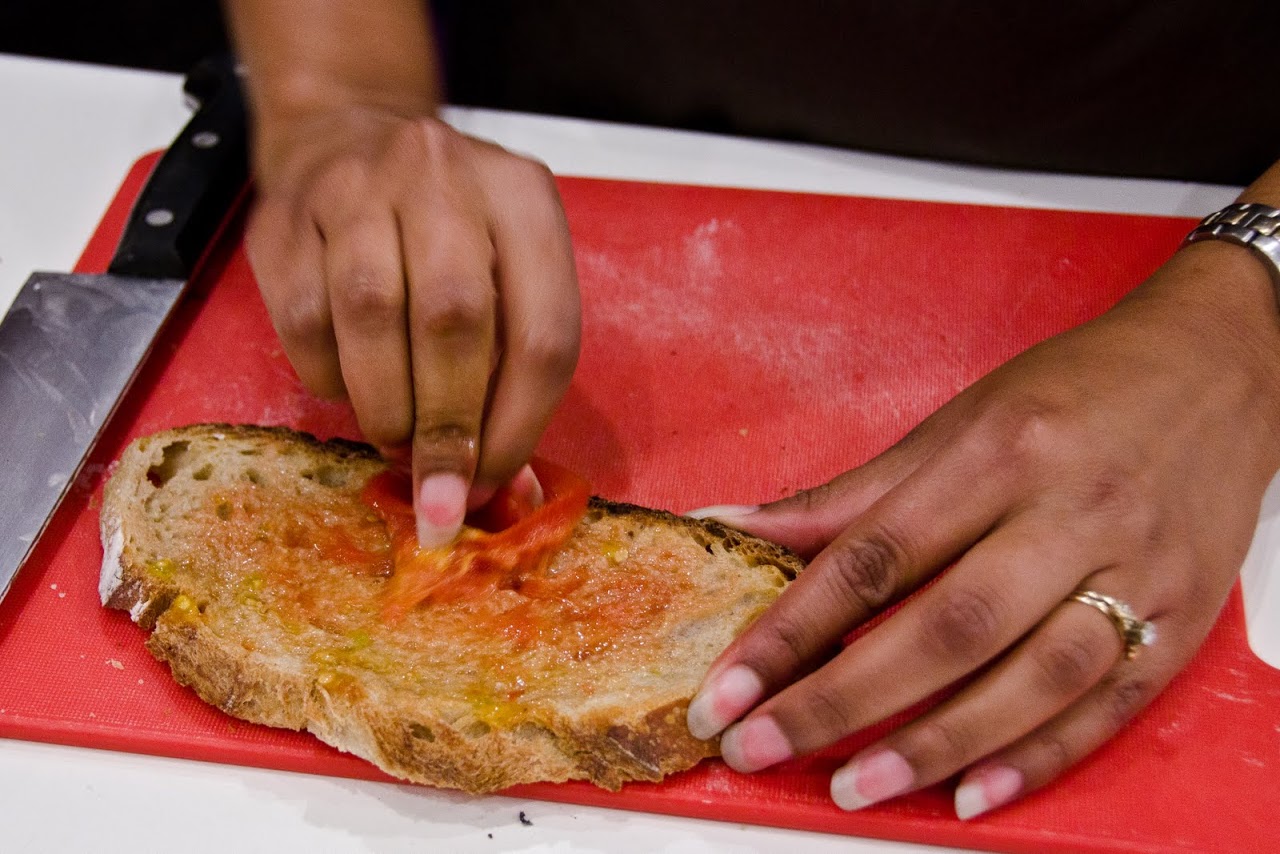
|
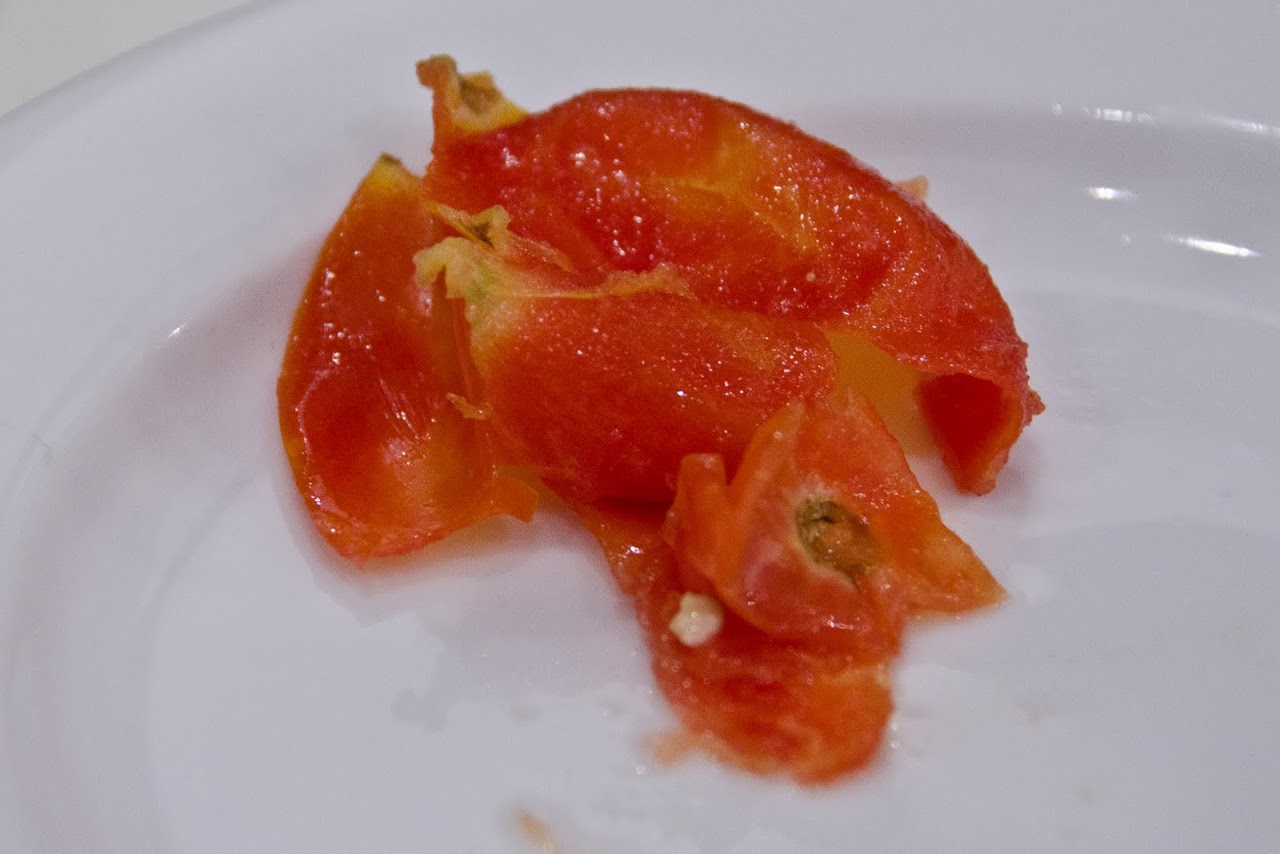
|
Unlike a completely hands-on cooking course, like the ones we took in Thailand and Zambia , different people volunteer for the different courses while the others sit back and watch (which made it a MUCH longer class and sometimes a bit boring while we were watching others cook). I volunteered to make the pan de tomate, a staple of Catalan cuisine. Bread is thinly sliced and set into the oven to toast. Then, we sliced one garlic clove (and only one, Ignacio warned), and lightly rubbed the garlic clove over the dried bread.
Ignacio had bought hanging tomatoes from the market to use for the pan de tomate. Regular Roma or beefsteak tomatoes will not make a good pan de tomate because the flesh is too thick. Hanging tomatoes, on the other hand, are smaller tomatoes that wrinkle and ripen while hung from a cord. Hanging tomatoes can stay fresh for months in a cool dark place. We cut the tomato in half and I rubbed the flesh against the bread until nothing stuck to the skin. Then, we sprinkled crushed rock salt on the bread and drizzled a good bit of olive oil on top. This simple appetizer was one of my favorite parts of the meal because the sharpness of the garlic and the sweetness of the tomato contrasted beautifully with the crunchy bread.
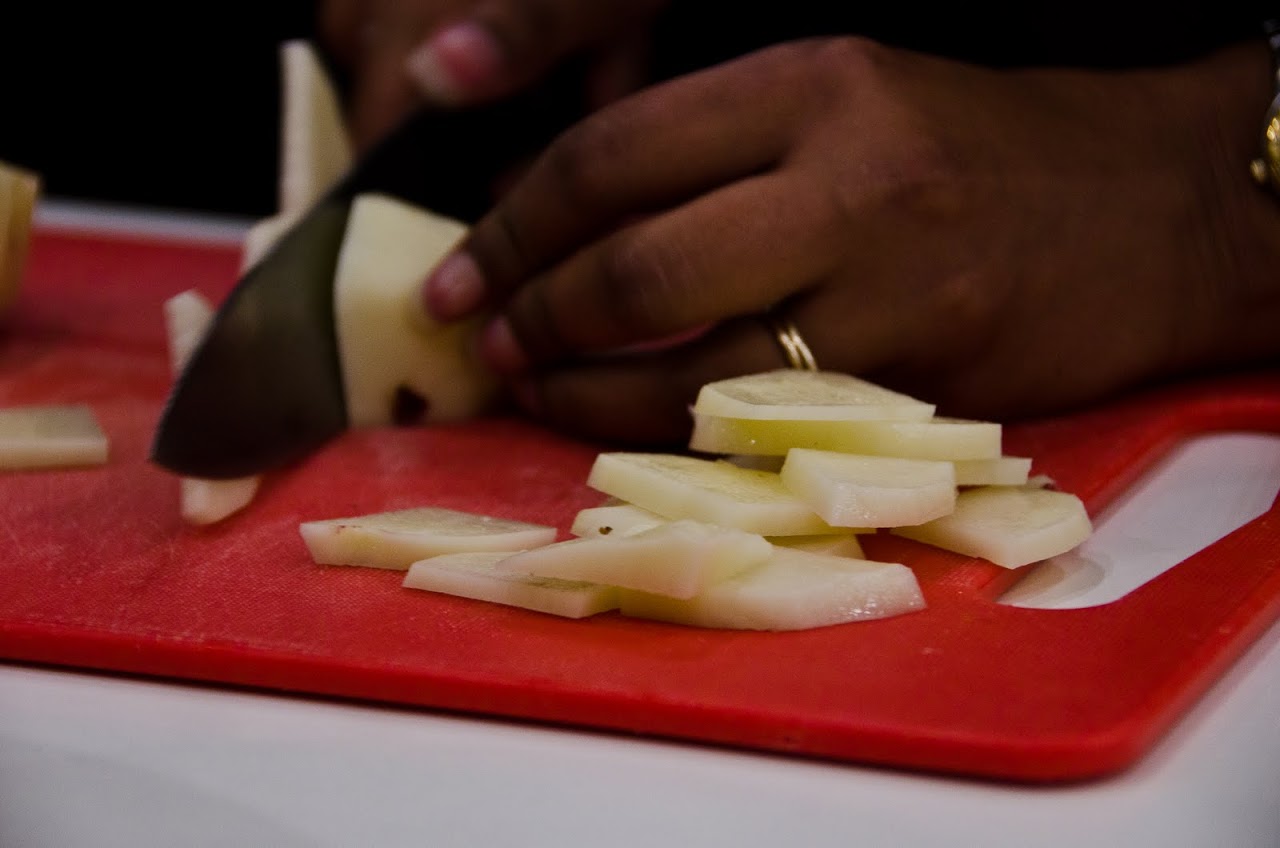
|

|
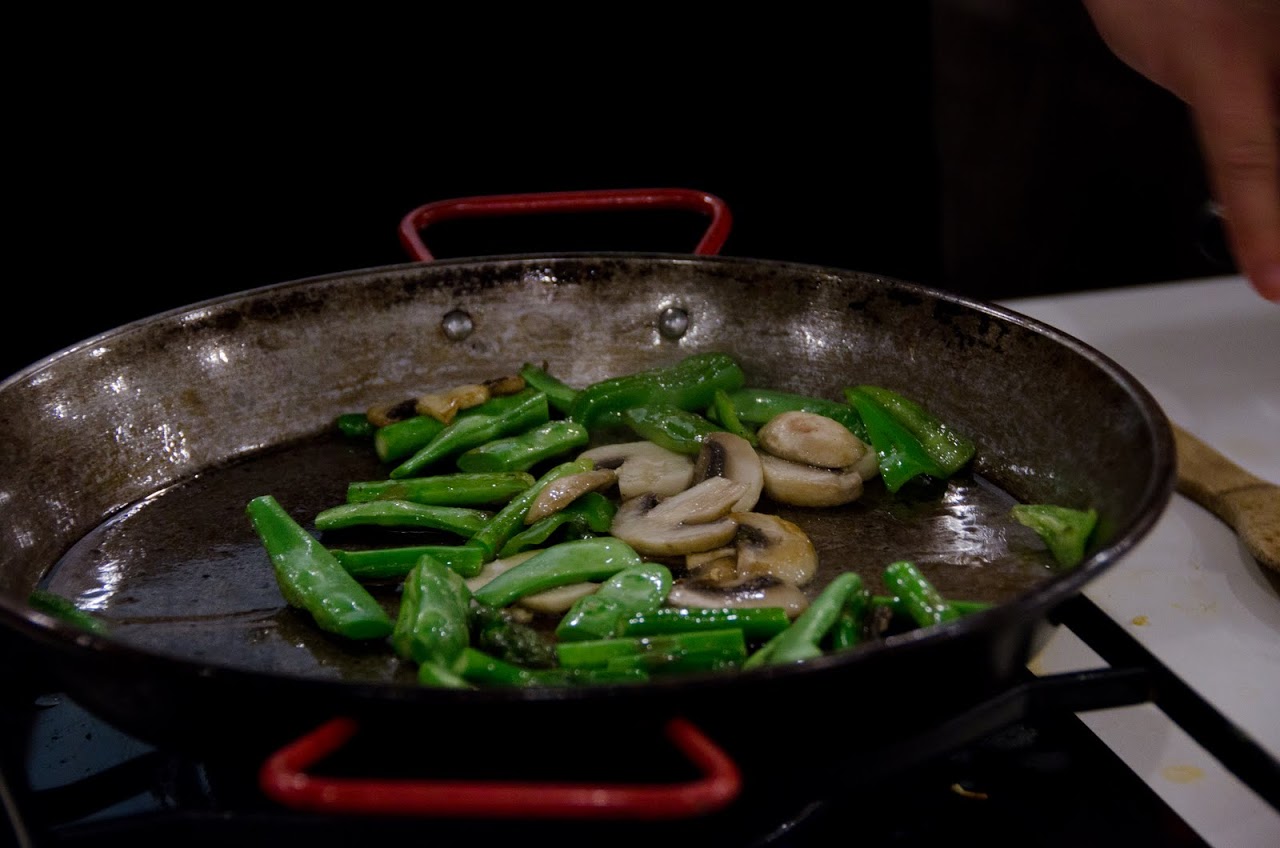
|
|
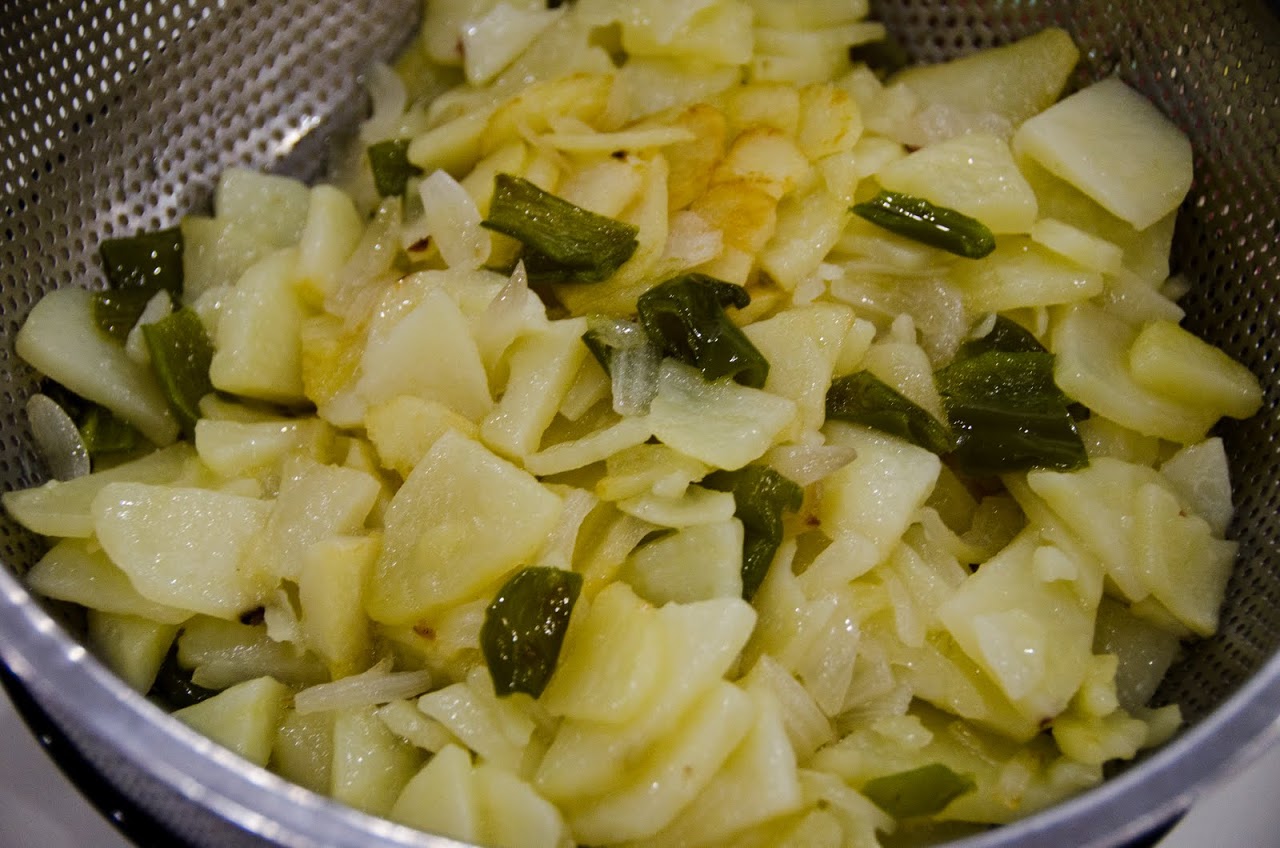
|

|
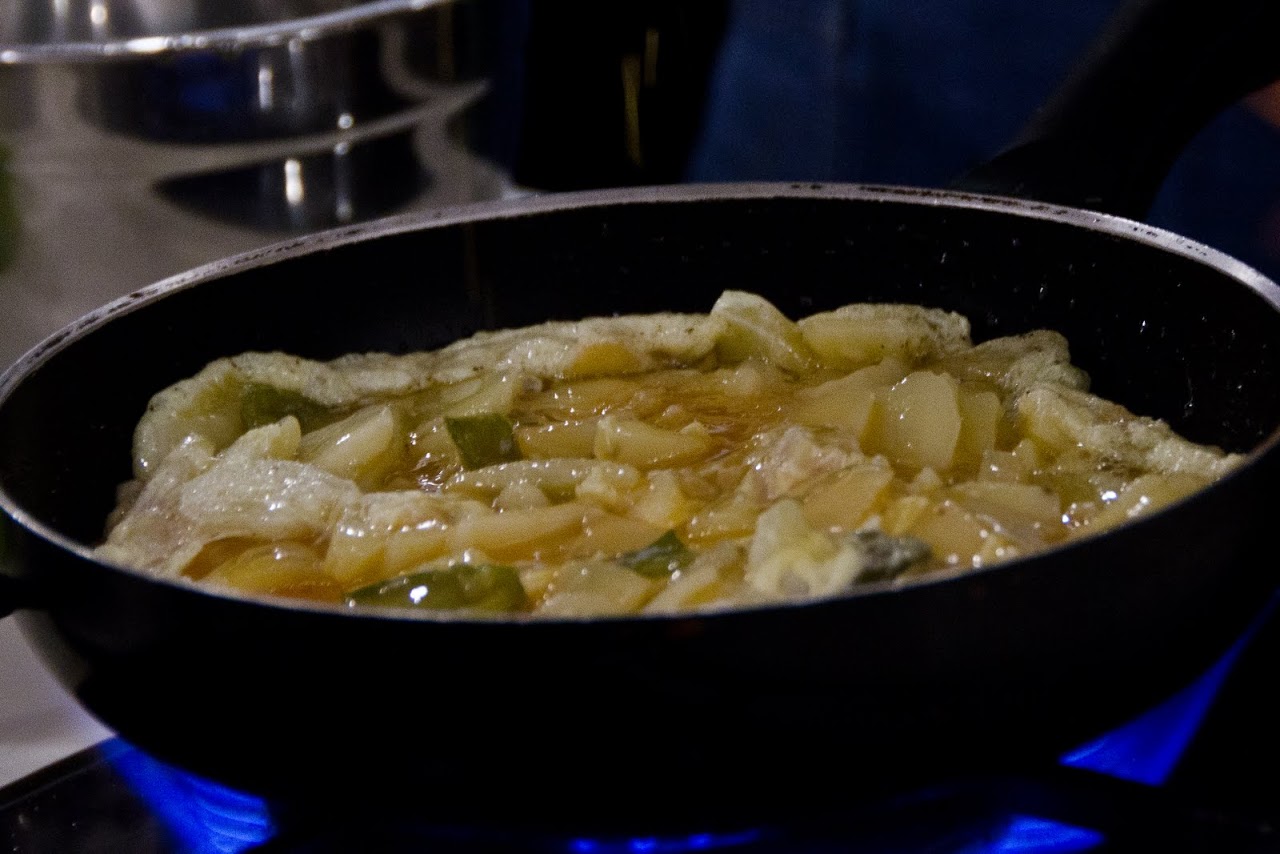
|
|
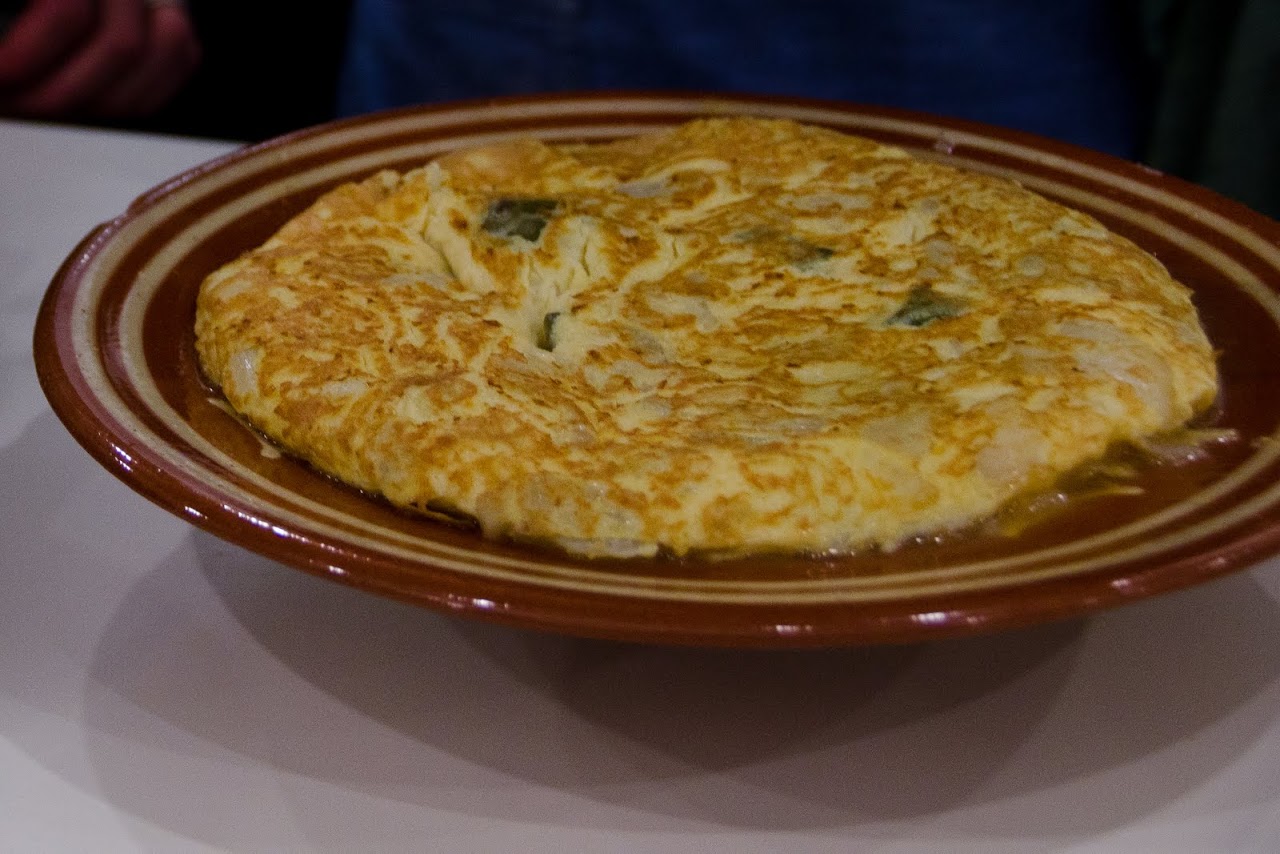
|
|||
Next up was the tortilla espanola. So, here's what I learned about making tortilla espanola: it takes a lot of oil. This is not a healthy food, people. We started by thinly slicing 10 ounces of potatoes and tossed them into a cast iron (or nonstick) skillet with enough olive oil to completely cover the potatoes (you can see how much if you look at the second picture above). All of the flavor in the tortilla espanola comes from the olive oil, so Ignacio emphasized that we should never skimp on the olive oil, even if we feel so inclined for health reasons.
The potatoes and sliced onions simmer over low heat in the oil for about 20 to 25 minutes. Once the potatoes and onions were soft, we took the vegetables out of the oil and placed them into a paper towel-lined colander. (You can also add in peppers, tomatoes, mushrooms, etc., if you so desire.) We beat 3 eggs with salt and poured the drained potatoes and onions into the bowl and mixed. We removed the excess oil from the skillet and Ignacio saved the oil for another usage of making tortilla espanola because the same olive oil can be used for about a week. We poured the egg mixture into the heated pan and cooked until the bottom starts to brown. Then, the trick: flip the tortilla espanola onto a plate and slide the tortilla back into the pan so that the uncooked part is face down and let it finish cooking. This takes practice, Ignacio said, which we realized because the two women in our class who tried had lots of difficulty with sliding the tortilla back into the pan.

|
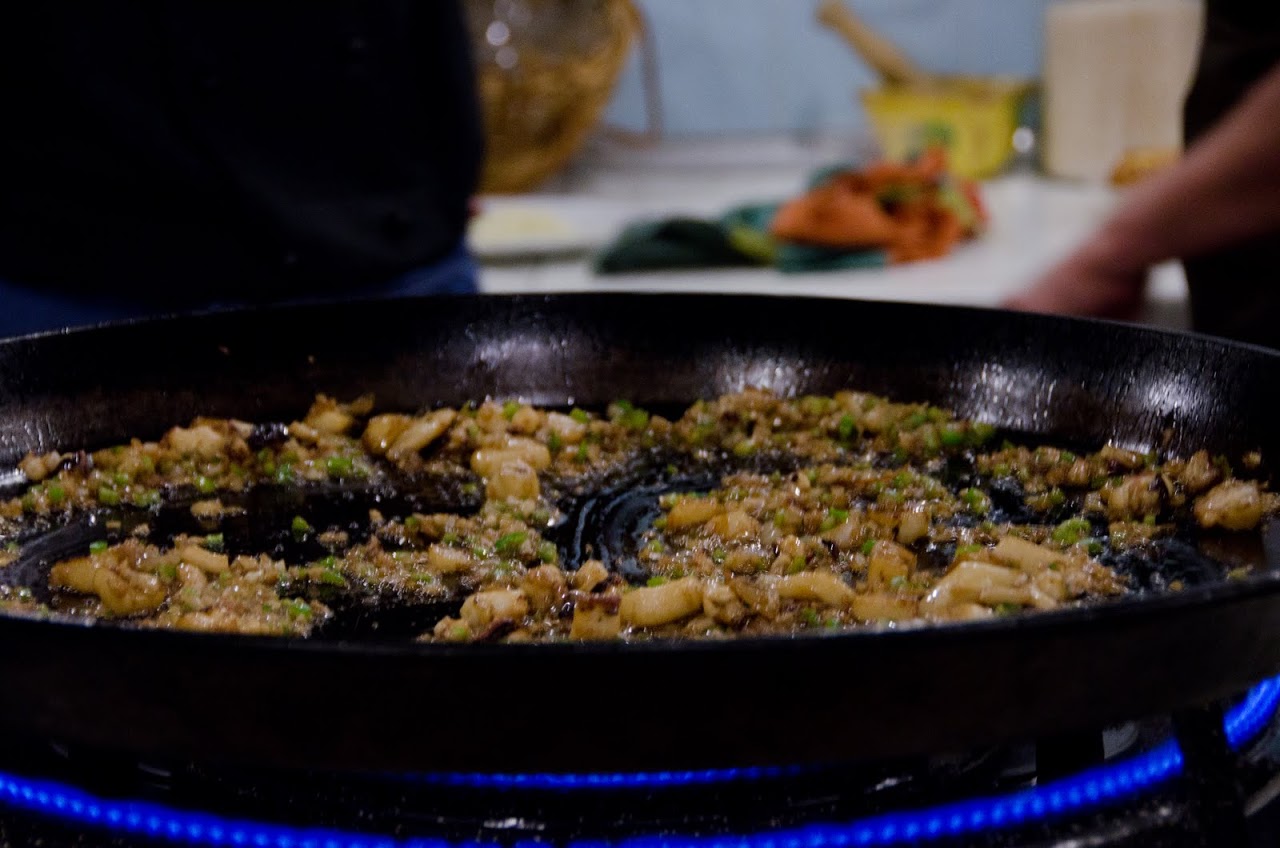
|

|
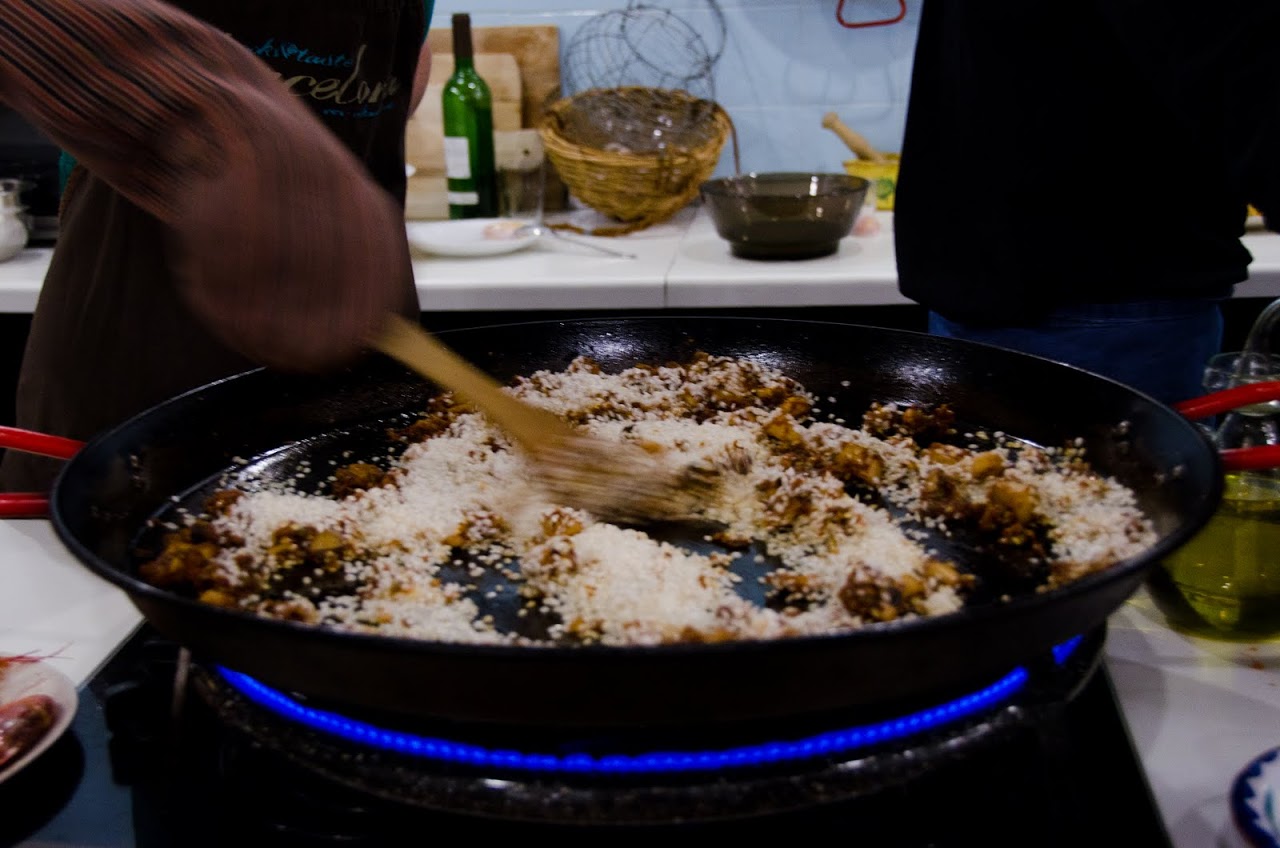
|
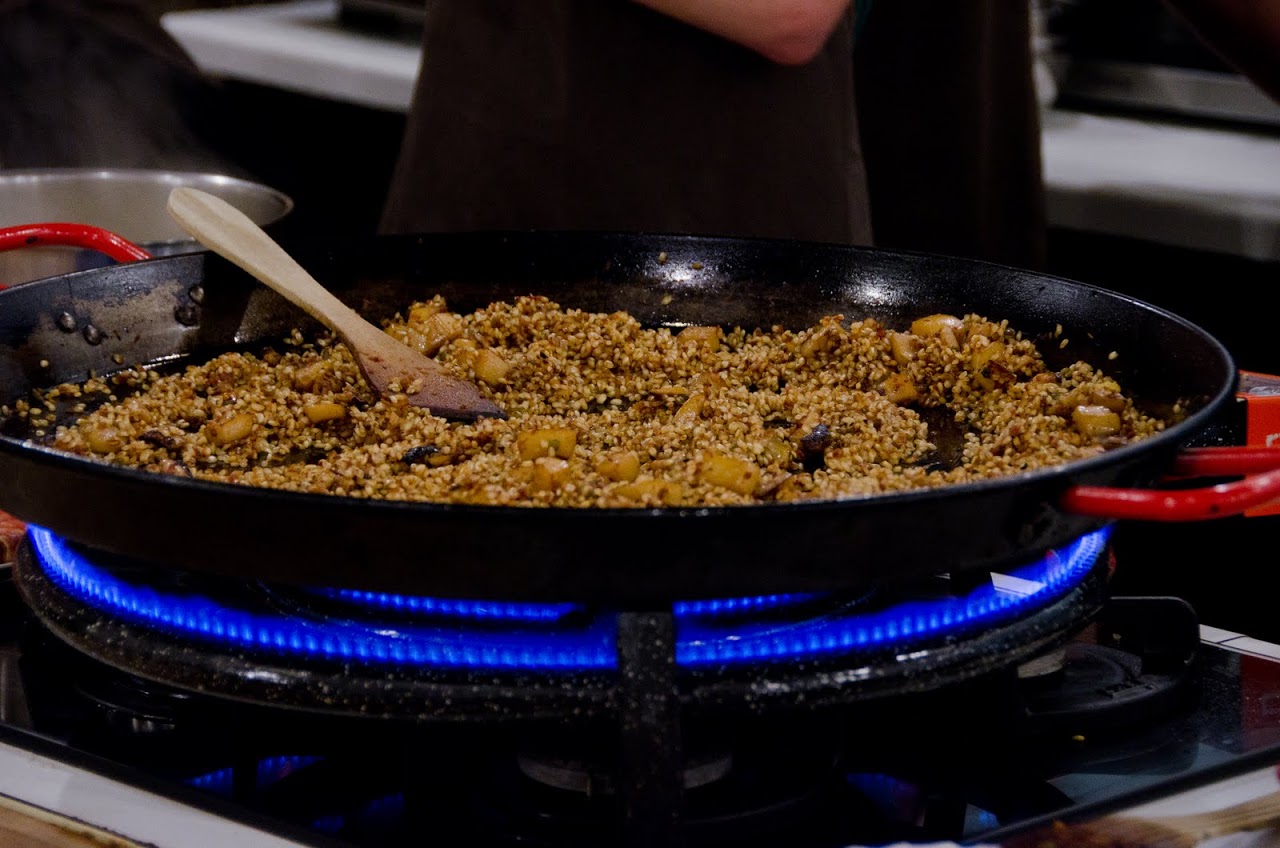
|

|
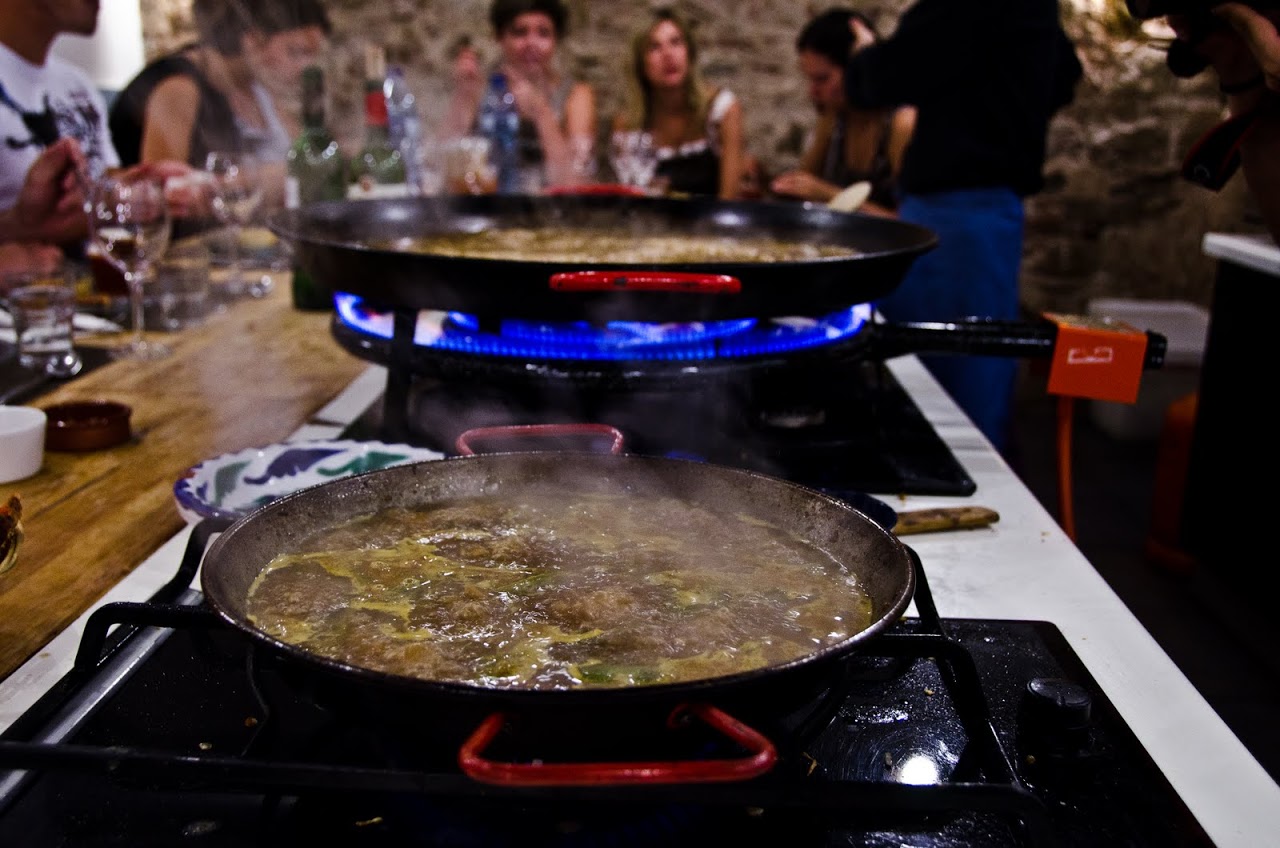
|
||
Paella
The paella was surprisingly simple to make. The most difficult part of the dish is finding a paella pan because any regular old pan will not suffice. The paella pan must be flat, wide, and shallow. For the larger seafood paella, Ignacio used a huge 8-12 person paella pan which had its own separate burner. My vegetarian paella only needed a regular burner.
For the seafood paella, heat the oil in the pan and fry 8 prawns until slightly browned. Set these aside. Then, add one grated tomato and two cloves og chopped garlic to the same hot oil and let it saute. When the tomato starts to burn, add in 2 squids cut in rings and paella rice. The rice must be specifically designed for paella making, described as "Arros roso perlo," because that type of rice has a very high starch content, even higher than arborio rice used for risotto.
Stir in 4.5 cups of boiling fish stock into the rice and put your spoon down. Unlike risotto, which requires constant stirring, paella requires NO stirring. Increase the heat to medium-high and cook for about eight minutes, ensuring that the heat is being distributed evenly across the pan. Layer the mussels and clams on top of the paella in a decorative pattern and reduce the heat to cook for about another ten minutes. Finally, add prawns in a decorative pattern to heat them up.
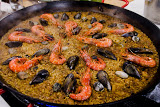
|
||
The vegetarian paella follows similar rules. After the garlic is fried, add in mushrooms, green beans, or carrots, and saute with the rice. Add less boiling vegetable stock because the vegetables will also excrete liquid. Right before the paella is complete, decorate with strips of roasted red pepper.

|
Crema catalan
Finally, we made crema catalan, a popular dessert in Catalunya. Less heavy than both flan and creme brulee , crema catalan is a simple custard recipe using milk and starch rather than heavy cream. The result is a delicate and fitting end to a Catalunyan meal.
Details
Cook & Taste classes are 65 Euros per person and last around 3 to 4 hours. They are held twice per day, so you can either opt for a lunch or dinner class. You can add on a market tour for 13 Euros per person (which we did and really enjoyed). As I mentioned before, my main hesitation in recommending this class is that if you are an experienced cook, you might find it a bit too basic. I felt like the only challenging part of the class was in flipping the tortilla espanola but only two people were able to do that aspect of the cooking. I personally like more hands-on classes where everyone has their own cooking station to make their own personal meals. Patrick, however, felt like he benefited a great deal from this class because he never cooked with shellfish or squid in the United States and Ignacio gave many pointers on selecting, using, and preparing shellfish and squid.




